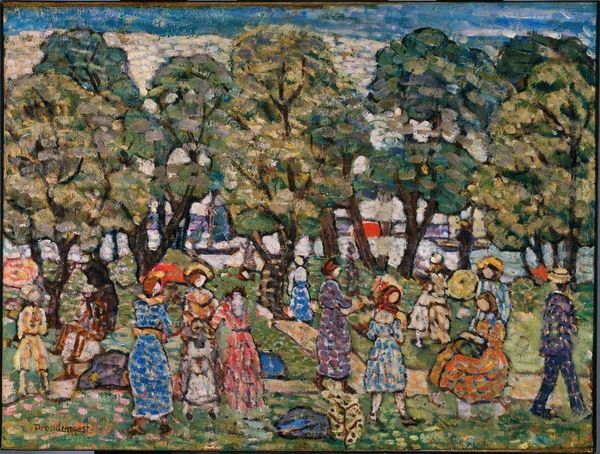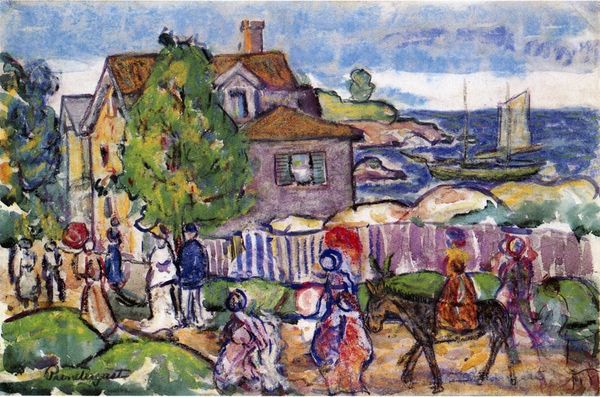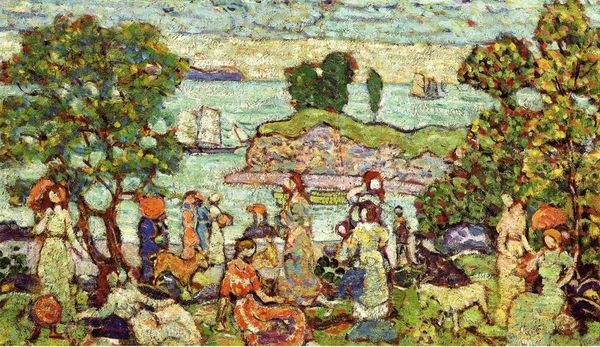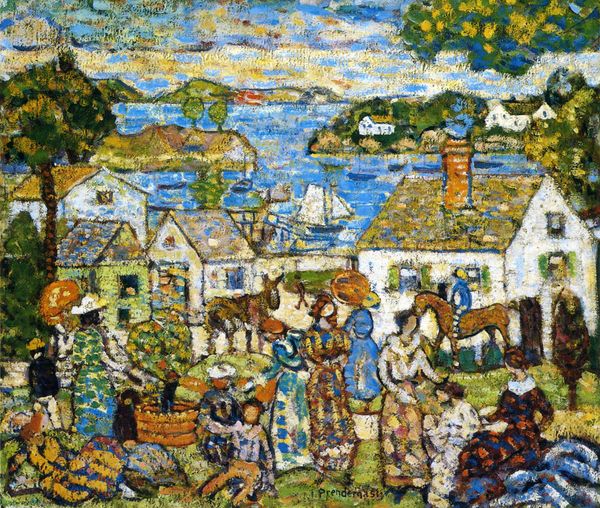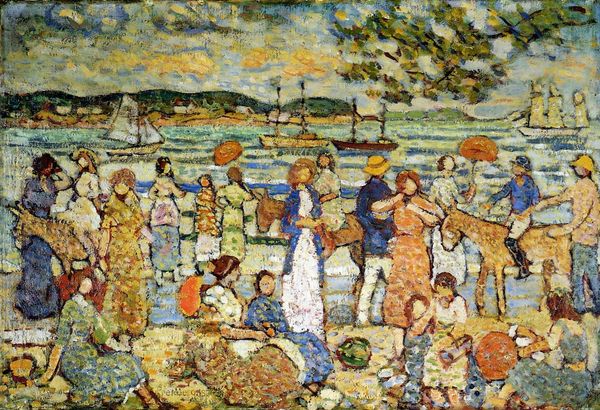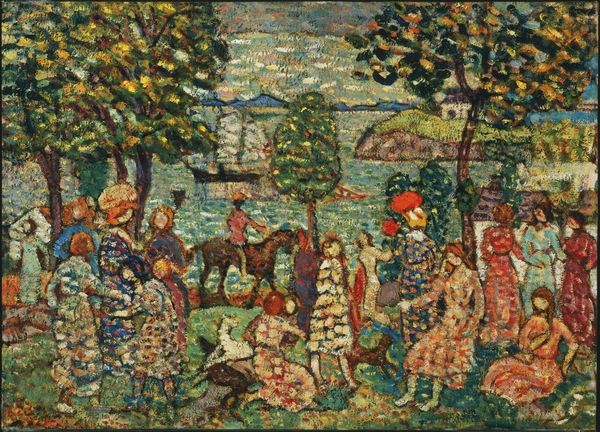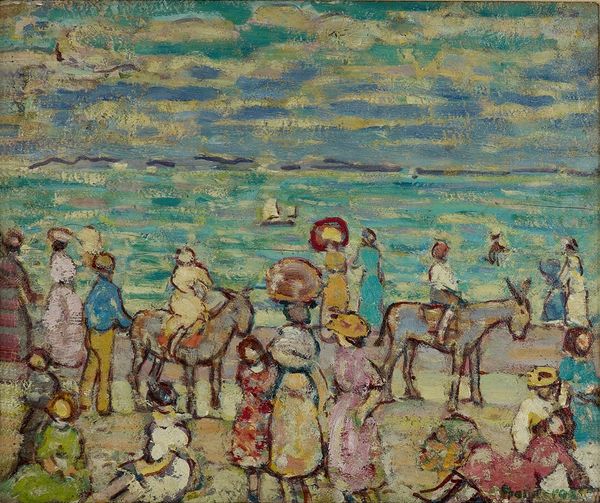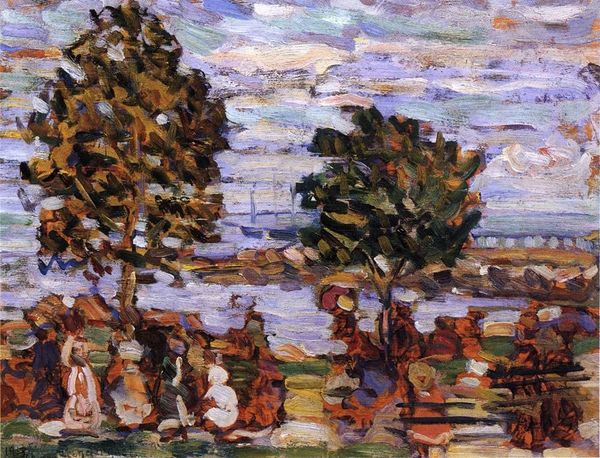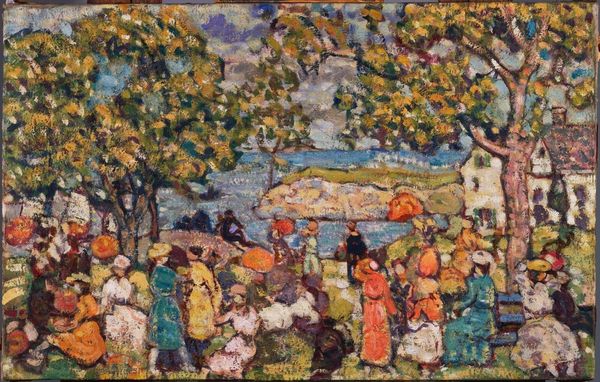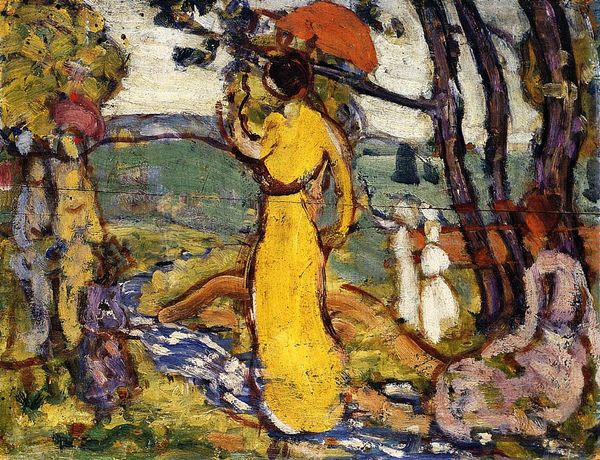
painting, plein-air, oil-paint
#
painting
#
canvas painting
#
impressionism
#
plein-air
#
oil-paint
#
landscape
#
impressionist landscape
#
figuration
#
oil painting
#
naive art
#
cityscape
#
genre-painting
Copyright: Public Domain: Artvee
Curator: Welcome! Before us is Maurice Prendergast’s *New England Village*, an oil on canvas, that captures the vibrant essence of leisure. What strikes you upon first viewing it? Editor: It's a delightfully busy scene. There is an undeniable energy; a carefree atmosphere radiating from the canvas with the playful figures and bright, saturated hues. I am reminded of the bustling spirit of accessible recreation promised in the early twentieth century. Curator: Indeed. The composition employs a rather flattened perspective, almost naive in its execution, emphasizing the arrangement of shapes and colors over realistic depth. Note the carefully balanced areas of light and shadow that suggest the warm summer sun falling on the scene. The strokes themselves are short and choppy, characteristic of the plein-air technique. Editor: And yet, the image presents more than mere technique. How can we ignore the obvious gendered narrative unfolding before us? A group of women dominates the foreground of this scene, many holding circular objects of unclear purpose, engaging in leisure. There seems to be such emphasis on these figures while a sailing ship sits obscured in the background! Curator: I appreciate the way that Prendergast’s painting foregrounds this particular vision of leisure by employing formal structure, such as how the rhythm and variation of these figures across the composition offers an intrinsic sense of movement, inviting the viewer into the moment. Editor: Perhaps this moment, in fact, reveals turn-of-the-century progress, where images of empowered and socially liberated women appear across the Western landscape of painting. We can assume the middle or upper class status afforded to these subjects through the activity itself! I ask: Whose narrative are we viewing here? And whose is left unseen? Curator: I agree it would be naive to overlook that context. However, let's look again at how Prendergast uses color theory to harmonize the canvas and the analogous color schemes of blue, green, and yellow and how those reinforce a peaceful sentiment. This echoes throughout his ouevre. Editor: By acknowledging the artist's approach in subject and painting technique, it enhances our appreciation for these broader concerns and gives a greater historical appreciation to a moment of relative aesthetic autonomy. Curator: Certainly, we begin to unpack how Prendergast presents to us a snapshot of life, shaped by form, technique, and social implication.
Comments
No comments
Be the first to comment and join the conversation on the ultimate creative platform.
